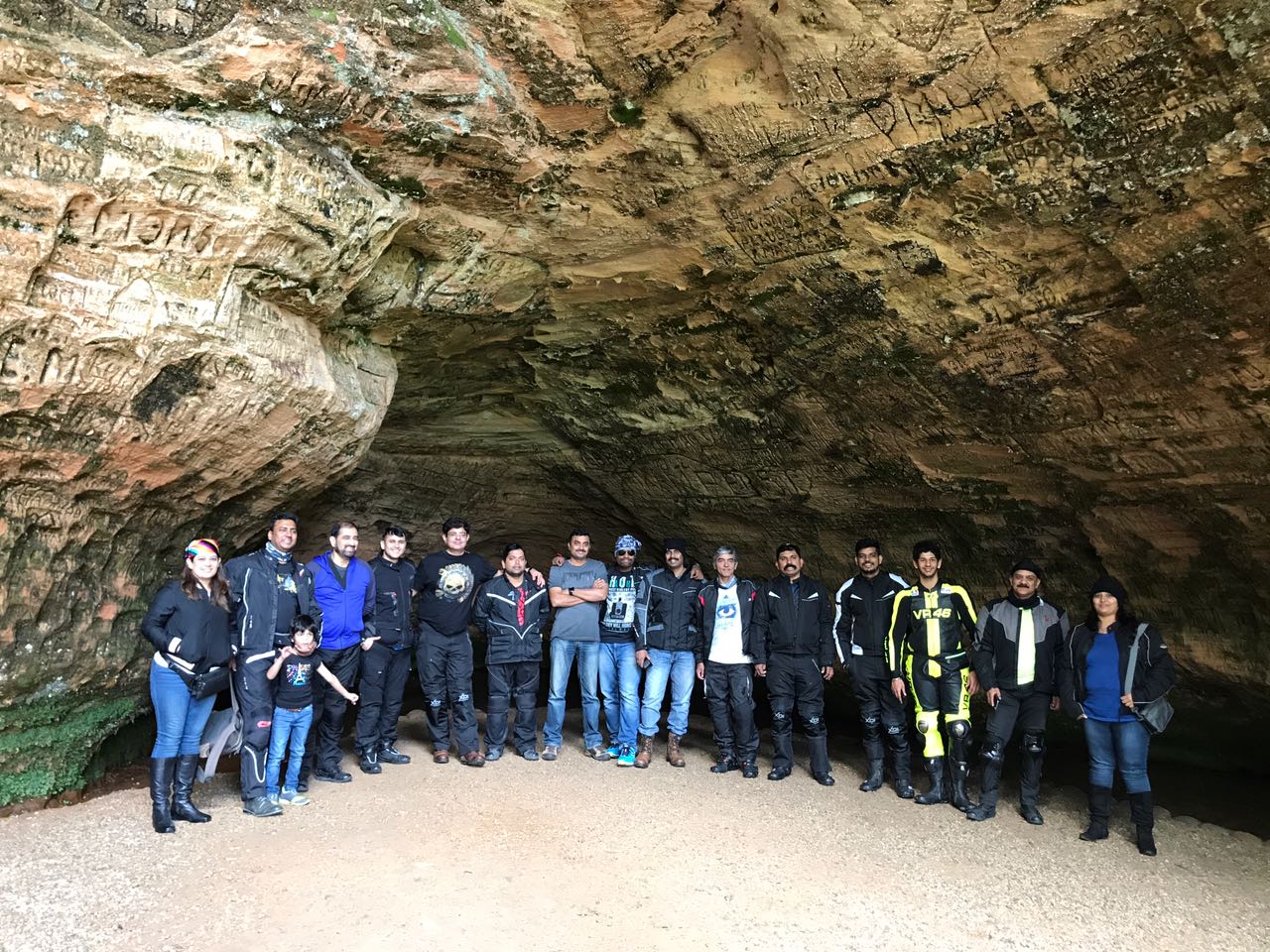Riga was rocking
Riga was rocking – the steak houses were enveloped in clouds of steam that were an olfactory delight. The old town square was buzzing with happiness because the weather was fantastic and the sun was warm. Bands played in open air café’s where bartenders pulled at draught handles as if they were slot machine levers and the filled up pint after pint.
It felt good to be amongst all this revelry.
Especially since the days were spent riding beautiful motorcycles through stunning scenery.
I had started off in Vilnius, the capital of the southern most of the three Baltic States, Lithuania. Here the most stunning sight is the St Anne’s church and its pretty university complex with its articulate arches and Latin inscriptions. And because there’s a university there are students and because there are students, a party’s never too hard to find and in fact on a good day the pedestrian area leading away from Cathedral Square towards the town hall square is abuzz with tourists and locals alike. Porto Dvaras restaurant at 24 Pilies gatvė, Senamiestis, Vilnius, is a very atmospheric place and definitely worth having a meal at if ever you visit. You can either sit on their street tables and watch Vilnius happen around you or you can be led down to the dungeons where the ambiance is very period right from the earthen water jugs to the garb of the buxom waitresses.
From Vilnius I had ridden to Riga the capital of Latvia and the mood was upswing because Riga really knew how to throw a party, especially during the summertime. But a sobering stop was the Hill of Crosses which reminds people today that life was not always cafés, violins and laughter.
The Baltic States have seen turbulent times right since the 1939 when they were simply signed over to the then Soviet Union by way of the Molotov–Ribbentrop Pact between Hitler and Stalin. Then they were occupied by Nazi Germany during the war and then again by the USSR after the war. It was only in the September of 1991 that they regained their independence after the iron curtain was drawn back and discarded.
The Hill of Crosses is where people come to find peace for the souls of their beloved who just disappeared without a trace. And, believe me, a lot of that happened here. People simply disappeared and were never heard of again. It is at the hill of crosses that crosses were put in their memory by relatives and friends. Today it is a touching place with thousands of crosses of all sizes and design put there for victims of the Second World War, Soviet oppression and more recently there are even crosses for the unfound victims of 9/11.
It is said that the Soviets would regularly bulldoze the place because there was no place for shrines and religion in Soviet ideology, but the next week again the crosses would appear and try what they could, the Soviets couldn’t do away with the Hill of Crosses.
It was definitely worth a stop – even though it is a slight detour – on the way from Vilnius to Riga.
And while travelling through these countries you continue to come across little stories about how political events turned life turbulent. I was sitting at a café enjoying the late evening sun near the St John’s church in RIga when I got talking to a gentleman on the next table. He was an American of Latvian origin who had been spirited away to the States as a child. When Latvia regained independence he came to Riga to find his roots and found out that he had considerable land to his name that had been returned to him after independence.
Riga also has two fine Indian restaurants called the Indian Raja and The Rama. Indian food is quite decidedly popular in Riga and the restaurants are good and hence they were running packed. The owner of one was outside taking a breather and he was so happy to parley in Hindi that he called for a pint of the local lager called Bauskas to keep me there and talking.
But more than the lager the spirit that symbolizes Latvia and Riga is Black Balasam, an herbal liqueur which is made by an elaborate process which involves the marriage of pure vodka with a number of different natural ingredients. The drink is as black as tar, quite bitter, but it also has a distinctive sweetness. Mixed with coffee its great, on top of vanilla ice-cream it is even better as I found out at the Black Magic Bar in Riga.
Next I wrenched the throttle open speeded towards Tallinn, the capital of Estonia and the epicenter of smashing nightlife in Northern Europe. I had been to Tallinn earlier that year just at the onset of Spring and the city was waking up from a cold winter. When I visited this time around, Tallinn was buzzing with tourists. Restaurants had permanent outdoor seating platforms set up, local girls in traditional dress were selling sugared and spiced almonds and the old town square was a buzz with musicians and entertainers dressed like court jesters from the middle ages.
Tallinn was an important member of the Hanseatic League that was formed in the 12th century. This was essentially a syndicate formed by sea faring merchants who got together in the common interest of protecting their cargoes and regulating tariffs. The Hanseatic League grew through the 13th and 14th centuries to become a formidable political and military power. And Tallinn was an important Hanseatic Port by virtue of its location. Some of the flamboyant houses and castles built during that time have survived and today give modern day Tallinn a grand air. In fact almonds are symbolic here because in those days only the very rich could afford exotic dry fruits like almonds and serving sugared almonds was an indication of wealth and social standing.
The Baltic States have only recently emerged from the darkness into an independent era. After years of oppression they are proudly forging ahead. You may think that you want to go for a arranged tour to Switzerland or some such place in Europe, but live a little, ride a bike. Gather some stories that will tell people you’ve lived life kingsize.
Come and ride with us to the Baltics.






